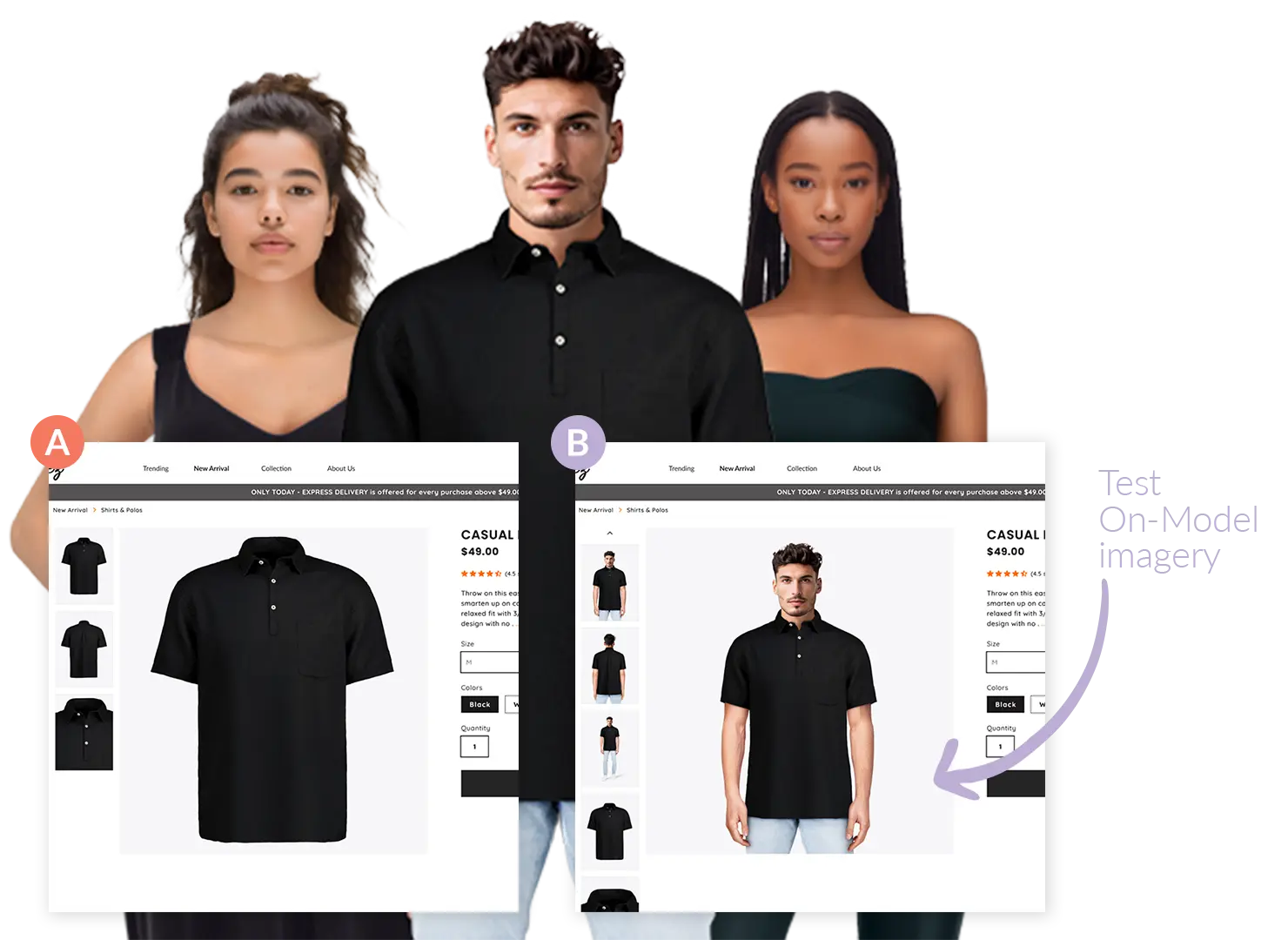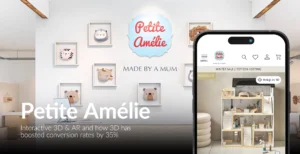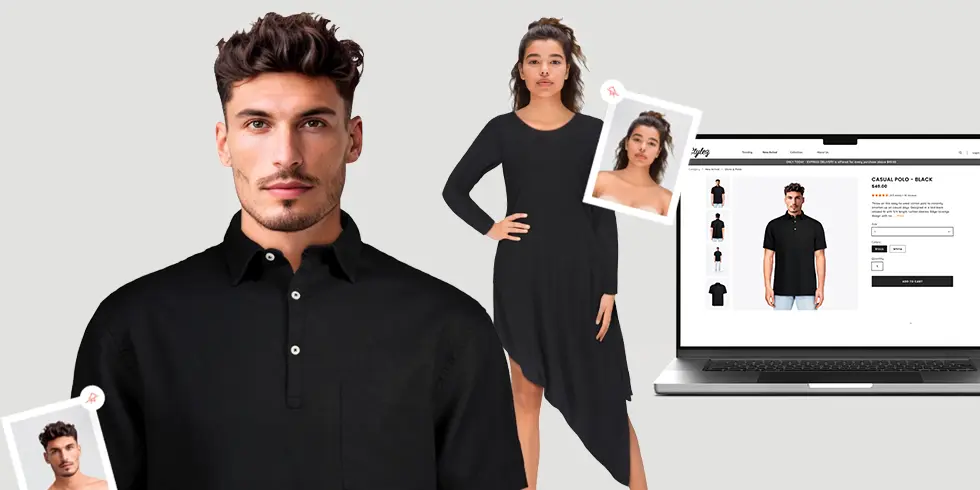In the competitive world of ecommerce, online retailers must create a visually captivating and realistic shopping experience. Model photography, whether using virtual models or not, is a vital tool for achieving this. In this post, we’ll dive deeper into the impact of model photography on enhancing customer experience, increasing conversions, and lowering returns, as compared to packshots or flat-lay photography.
1. Enhancing the Customer Experience
Model photography provides context for the product, allowing customers to see it in a setting that mirrors actual use, appealing to their imagination, and enhancing the shopping experience.
Creates an Immersive Experience
Model photography shows the product in action, creating a more immersive and engaging customer experience. For instance, a modeled image of a watch could showcase it being worn while doing everyday activities, allowing customers to imagine how it would look on their wrist in similar situations.
Showcases Product Details:
Model photography highlights a product’s texture, color, and shape, helping customers assess its quality and suitability. For example, a leather handbag displayed on a model can reveal the texture and true color of the leather, as well as how the bag hangs or folds when carried.
Provides Style Inspiration
Showcasing the product styled with complementary items offers customers ideas for integrating it into their style. A shirt could be shown with a matching pair of pants and accessories, inspiring customers to purchase the entire outfit.
2. Increasing Conversions
Model photography can significantly boost conversion rates by providing a more realistic view of the product. When customers see how the product looks in a modeled setting, they can better understand its size, fit, and style, leading to informed and confident purchase decisions.
Improved Visualization
Model photography helps customers envision themselves using the product, increasing the likelihood of purchase. For instance, seeing a dress on a model allows customers to imagine how it would fit and flow on their body.
Enhanced Fit and Proportions Understanding:
Model photography provides a clear view of the product’s fit and proportions, crucial for items like clothing and accessories. A pair of shoes, for example, showcased on a model, gives customers an idea of how the shoes would fit and complement their outfits.
Promotes Upselling and Cross-Selling
Showcasing the product styled with other items encourages additional purchases. A necklace displayed with matching earrings and a bracelet can inspire customers to buy the complete set, increasing the average order value.
3. Lowering Returns
High return rates can be costly for ecommerce retailers. Model photography can help mitigate this by offering customers a more accurate representation of the product, leading to more satisfied customers and fewer returns.
Better Expectation Management
Model photography provides a comprehensive view of the product, reducing unmet expectations and resulting returns. For example, a jacket shown on a model can help customers understand its length and fit, reducing the likelihood of returns due to size or style mismatches.
Enhanced Product Evaluation
By showing the product in a modeled setting, customers can better assess its suitability for their needs. A laptop bag displayed on a model can reveal the bag’s size, number of compartments, and how it looks when carried, helping customers evaluate whether it meets their requirements.
Improved Customer Confidence
Model photography helps customers feel more confident in their purchase decision, leading to higher satisfaction levels and lower return rates. For instance, seeing a virtual model with different body types wearing the same dress can instill confidence in customers, knowing that the dress will likely suit them as well.
4. Testing Different Aspects of Model Photography
Experimenting with different elements of your model images can reveal insights into your audience’s preferences and provide a better understanding of what resonates with them. As the saying goes, “What gets measured gets managed,” so by systematically testing various aspects of model photography, you can tailor your images to captivate your audience and drive better results. Here are some aspects you can experiment with:
Model Appearance and Diversity
Try using different models to represent various body types, skin tones, ages, and other characteristics that resonate with your target audience.
Eye-Gaze
Experiment with the direction of the model’s eye-gaze, whether looking at the camera, looking away, or directing their gaze towards the product.
Facial Expressions
Test various facial expressions on your models, such as smiling, neutral, or thoughtful.
Hair Styles
Experiment with different hairstyles to see how they impact your customers’ perceptions of the product.
Poses and Angles
Test various poses and angles to highlight different features of the product.
Model Outfits
Experiment with different outfit styles and color combinations to see how they impact the product’s perceived value.
Backgrounds and Props
Test different backgrounds and props to create various moods and settings for your products.
Lighting
Experiment with different lighting setups, including natural and artificial light, to see how they affect the product’s appearance and the overall mood of the image.
Photo Composition
Test different compositions by changing the model’s placement within the frame, the distance between the model and the camera, and the alignment of various elements in the image.
Post-Processing Techniques
Experiment with different post-processing techniques, such as color grading, retouching, or adding effects, to enhance the overall look of the model photography.
Conclusion
Model photography plays a critical role in ecommerce, enhancing the customer experience, boosting conversions, and reducing return rates. By providing a more realistic and engaging view of your products, model photography becomes an invaluable tool in the ever-evolving world of online retail. By experimenting with different aspects of model photography and optimizing your images to resonate with your target audience, you can create a more captivating shopping experience, increase sales, and ensure lasting customer satisfaction.
Discover POSED:
Now you can create on-model imagery faster and easier than ever before
Whether you are looking to cut costs on your existing model photography or need a fast and efficient way to start testing the use of model photography POSED can you help you out.



